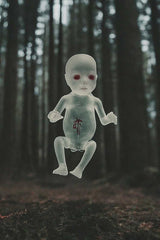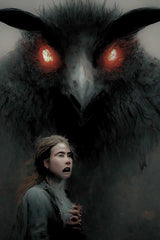
The Tragic Origins of the Myling
The term "myling" may sound familiar, especially if you've read the works of renowned Swedish author Astrid Lindgren. In Scandinavian folklore, the myling is a ghostly figure that reflects the dark realities of a bygone era.
In the past, when unmarried mothers were shunned and stigmatized by society, many were driven to the unthinkable act of murdering their newborn children. This social ostracization and lack of support left these women with no other choice but to hide their babies, often burying them in secret locations. The myling is said to be the ghost of these murdered, unbaptized infants, doomed to haunt the living as a result of their tragic fate.
The Myling's Haunting Presence
The myling is known by various names across Scandinavia, such as "utkasting," "utböling," "gast," and "mölklack." The most common legend surrounding the myling is its persistent efforts to make its presence known, in the hopes of revealing the mother's crime and the location of the hidden remains.
These chilling tales were often used to scare unmarried women, serving as a warning of the consequences they would face if they dared to conceal their children. The legends describe how the myling's cries and whispers could be heard in the most unlikely of places – near streams, in the forest, or even beneath the floorboards of a home.
The Myling's Appearance and Revenge
The appearance of the myling varies greatly in the folklore, with some accounts depicting it as the infant it was when murdered, complete with a red mark around its neck. Others describe the myling as a giant, growing larger and larger until it towers over the treetops. Some even claim it takes the form of a large, black bird that attacks its mother, clawing at her face.

In many stories, the myling is said to find peace only when it is given a name and baptized, or when it has exacted its revenge. This revenge often takes the form of the myling dancing its mother to death or draining her blood through breastfeeding.

The Myling's Legacy
Tragically, the plight of the myling is not confined to the past. Even today, there are instances of newborn babies being abandoned or murdered by their mothers, often due to the lingering stigma surrounding unmarried pregnancy. While societal attitudes have evolved, the haunting legacy of the myling serves as a sobering reminder of the consequences of such tragic acts.
The enduring tales of the myling offer a glimpse into the dark realities of a bygone era when the rights and autonomy of women were severely limited. These chilling folklore stories continue to captivate and unsettle, serving as a powerful testament to the resilience of the human spirit in the face of unimaginable adversity.


